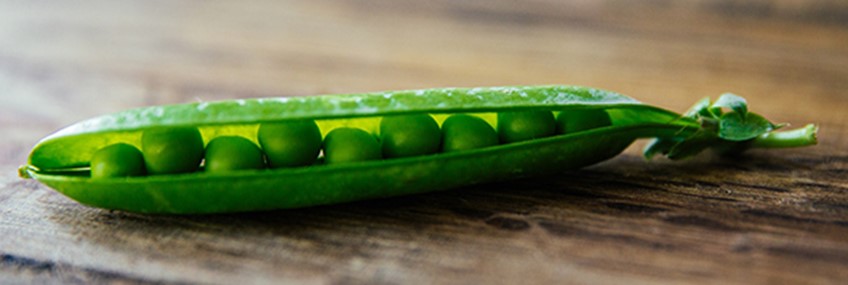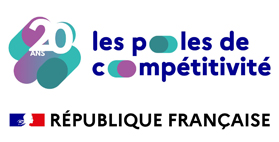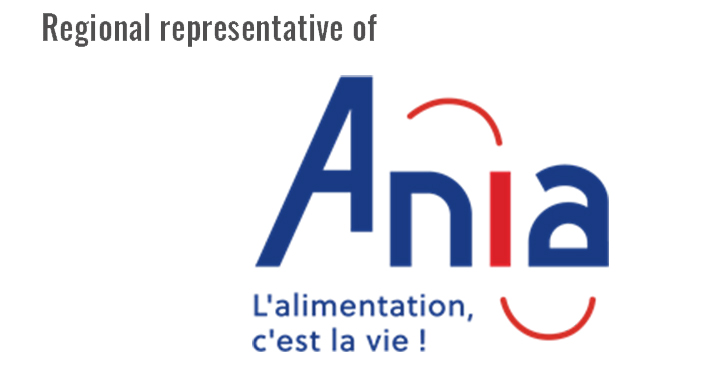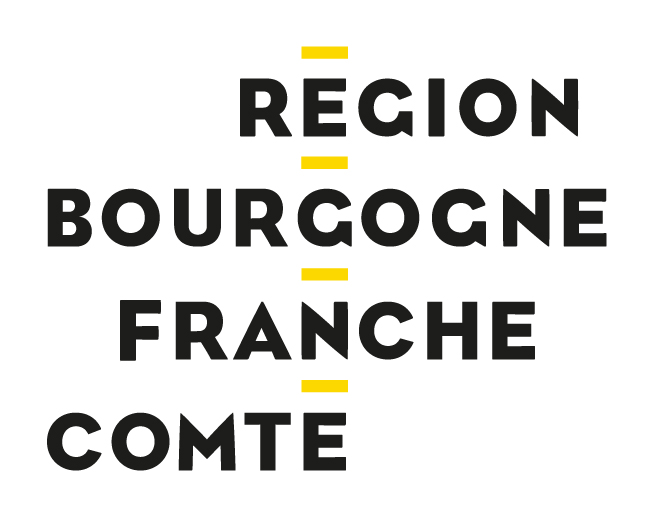19 July 2018 / The experts of the Vitagora ecosystem / Vitagora publication / Science and technologies
Fast, accurate plant breeding: the benefits of high-throughput phenotyping

Selecting the most interesting plants for human use is a time-consuming task, and one that is at the mercy of the vagaries of the weather. Previously carried out in the field, this selection can now be carried out using high-throughput phenotyping, which is faster, more precise and carried out under controlled conditions. What does this analysis technique involve? What are its characteristics? What can be studied using phenotyping?
Why this should interest you?
- Plant breeding in agriculture is a time-consuming but essential technique for solving certain problems, such as the impact on plants of abiotic constraints (water stress, nutritional deficiencies) or biotic constraints (pathogens).
- High-throughput phenotyping enables faster, more precise selection under controlled conditions, in a dynamic, automated and non-destructive way.
- This technique makes it possible to study both above-ground and below-ground phenotypic traits, thanks in particular to the High Throughput Phenotyping Platform (HTPP).
- High-throughput phenotyping also enables us to better understand plants and their adaptation mechanisms, by linking phenotype and genotype.
For centuries, we have been empirically selecting the plants that are most interesting to us. Plants that grow faster, are more resistant, produce more fruit or are taller: we select "phenotypes". In this article, you will see that today, we are capable of doing this precisely, rapidly and using automated processes.
A phenotype is the expression of genes (genotype) in relation to the environment. This phenotype can be structural, such as the characteristic of having green, broad and well-spreading leaves for a plant in good nutritional and hydric conditions. It can also be functional, such as the ability to absorb water and minerals through the roots. The genotype contains information about the plant's typical development in relation to environmental conditions. If a plant lacks minerals such as iron or nitrogen, its phenotype will be modified by this deficiency. Depending on its genotype, a plant may, for example, have wilting and yellowing leaves, whereas other plants may develop correctly under the same environmental conditions.
It is these phenotypic traits that are screened during plant selection. However, varietal selection takes time (up to ten years) and can be complex. Meteorological conditions in the field vary considerably from one season to the next, and from one year to the next, making it difficult to interpret the results obtained. It is very difficult to study the effect of one environmental variable if all the others continue to vary simultaneously. But thanks to scientific and technological advances, we have been able to overcome these drawbacks.
This is where controlled conditions (in greenhouses or climatic chambers) combined with high-throughput phenotyping have increased the efficiency of breeding programs. What does high-throughput phenotyping involve? What can be studied using phenotyping? What are the advantages of this technique for breeding and agriculture? What are its specific features? Christophe Salon, INRAE Research Director and Scientific Director of the High Throughput Phenotyping Platform (4PMI), gives us his expert view on the subject.
 Christophe Salon
Christophe Salon
From biochemistry to high-throughput phenotyping
After completing a PhD in biochemistry and cellular and molecular physiology at INRA Bordeaux, Christophe Salon moved into computer science and biology, before finally returning to the world of research. He spent 3 years in Canada working on cyanobacteria , before becoming a senior researcher at UMR AgroEcology in Dijon in 1996. Now Director of Research at INRAE, he heads the GEAPSI (Genetic and Environmental Determinants of Plant Adaptation to Innovative Cropping Systems) cluster, conducting research on legumes and their adaptation to new environments and cropping systems. Christophe Salon is also Scientific Director of the 4PMI (Phenotyping Platform for Plant and Micro organisms Intercations), designed and located in Dijon since 2006.
UMR AgroEcology
This joint research unit is made up of several divisions working on topics relating to plants (including the GEAPSI division specializing in legumes), microorganisms, the environment, agriculture and soil. The problem is: how to develop sustainable agriculture, enabling production that meets our food needs in terms of quality and quantity, while respecting the environment? Research focuses in particular on interactions between plants, but also between plants and microorganisms. The unit is headed by Fabrice Martin. Christophe Salon has been deputy director since the unit was created in 2012. Find out more about UMR AgroEcology.
High-throughput phenotyping: significant advantages
Controlled conditions
The high-throughput phenotyping at 4PMI uses controlled analysis conditions. "We can take measurements always at the same temperature, with the same degree of luminosity, with the same quantity of nutrient solution. We can control the environment to really focus on phenotype and genotype. This speeds up the discovery of the genes or genetic parameters that interest us, so that we can then select species," explains Christophe Salon.
The fastest process in the world
The use of high-throughput phenotyping accelerates the plant selection process by a factor of two. "Our system enables us to phenotype the 1,200 RhizoTubes (see "Studying roots using RhizoTubes" below) we have available per day, the highest throughput in the world. In theory, this can reach 2,400 RhizoTubes per day," says Christophe. The platform also enables time-consuming tasks to be carried out automatically. "When we use "classic" pots, the flow rate reaches 1,800 plants watered automatically and in a controlled manner. So we know exactly how much water they've received. If we had to do it manually, we'd have to weigh each pot to check the water quantities, and that would take a monstrous amount of time. With the 4PMI, it's done in an hour and a half.
Identifying the perfect plant?
By identifying plants' root and aerial traits, "we can select from collections of plants those that will be the most resistant to a given stress, or make more leaves or more fruit", he adds. But phenotype selection doesn't stop there. "Phenotyping without genotyping is like opening a phone book with all the telephone numbers without having the names of the people involved," explains Christophe to illustrate his point. "By linking phenotype and genotype, we can determine the most interesting genetic backgrounds and see how we can reconstruct the perfect plant from these genes; or at any rate, how we can select, from the genetic variability we have, the individuals that correspond to those traits."

What does this analysis technique involve?
Imaging to preserve the plant
Phenotyping involves both functional and structural imaging. "The 4PMI in Dijon carries out structural phenotyping, for example, using 3D observation of plants to extract their shape, leaf surface, biomass (weight) and fruit quantity," explains Christophe. "We can follow the progression of green surface, flowering, fruit ripening and the evolution of their weight over time... and all this, without destroying the plant." In fact, it would normally be necessary to "destroy" the plant by cutting up its various compartments (leaves, stems, roots, etc.) for weighing and analysis.
Studying roots with RhizoTubes
Unlike other similar platforms around the world, the 4PMI is unique in its ability to perform root phenotyping. "It's complicated, if not impossible, to see and study a plant's roots without digging it up and damaging it", he recalls. To overcome this problem, Christophe and his team developed the patented RhizoTubes system. These circular pots, designed to grow plants between two transparent walls, enable observation of the roots and their interactions with soil microorganisms. The RhizoTubes are then transported to different analysis booths to be examined under different wavelengths (blue, red and green) in order to determine the most suitable microorganisms for the soil. These imaging booths, known as RhizoCabs, were developed in partnership with local manufacturers (Inovia Flow) and PACA (Shakti).
Multiple applications, for example...
Which pea variety is most resistant to iron deficiency in calcareous soil?
Peas are leguminous plants that cannot tolerate a lack of iron in their environment. Through its roots, the plant can absorb iron in ionic form (Fe++). However, calcareous soils with an alkaline pH transform iron into Fe2O3, which cannot be assimilated by the plant. Iron is essential for vital functions such as respiration, chlorophyll synthesis and photosynthesis. In the event of deficiency, yellowing or even discoloration (chlorosis) of the leaves can occur, leading to the death of the plant.

The challenge was to find pea plants with genotypes that could withstand this iron deficiency, so that they could be planted on calcareous soils. "The field trials carried out by the seed companies were very long, involving several campaigns and a selection of 300 to 400 potential genotypes. However, as climatic conditions changed from one year to the next, symptoms of deficiency were not expressed in the same way", reports Christophe.
Thanks to high-throughput phenotyping, UMR AgroEcologie was able to develop a method for phenotyping plants under controlled conditions using image analysis. "Our color image analysis algorithms have enabled us to discriminate between genotypes that are sensitive to chlorosis and those that are resistant (able to develop even with very little iron). We built an "identity card" for each plant, with their phenotype and genotype, to classify them from the most resistant to the least resistant. It was then possible to grow only those plants best adapted to limestone soils.
Sustainable, productive agriculture
The objective for UMR and Christophe Salon will be to find the plants, particularly legumes, that best collaborate with soil microorganisms, enabling them to do without inputs (fertilizers). "This would reduce greenhouse gases and excessive energy consumption. Finding the genotypes best suited to water stress or other stresses (lack of sulfur, nitrogen, etc.), searching for the best plants for sustainable, ecologically productive agriculture - these are the research examples that come to Christophe's mind when he looks to the future.
To find out more about Christophe Salon's work, or to be put in touch with this research team, please contact Anaïs Guérin, Innovation and Ecosystem Manager at Vitagora: anais.guerin@vitagora.com.
Keywords
High-throughput phenotyping, 4PMI, genotype, phenotype, plant, species, selection, agriculture
Further reading
- Jeudy, C., Adrian, M., Baussard, C., Bernard, C., Bernaud, E., Bourion, V., Busset, H., Cabrera-Bosquet, L., Cointault, F., Han, S., et al. (2016). RhizoTubes as a new tool for high throughput imaging of plant root development and architecture: test, comparison with pot grown plants and validation. Plant Methods 12, 31.
- Moreau, D., Salon, C., and Munier-Jolain, N. (2012). How to hierarchize the main physiological processes responsible for phenotypic differences in large-scale screening studies? Plant Signal. Behav. 7, 311–313.
- Voisin, A.-S., Prudent, M., Duc, G., and Salon, C. (2015). Pea nodule gradients explain N nutrition and limited symbiotic fixation in hypernodulating mutants. Sustain. Dev. 35, 1529–1540.




 Home
Home

















